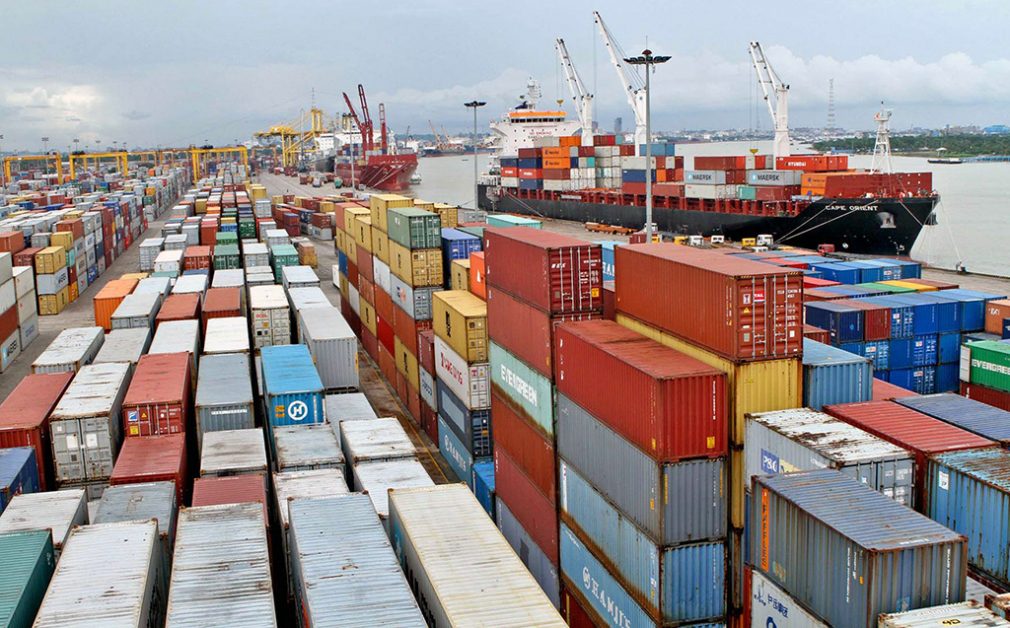August 31, 2020: Flourishing export of readymade garments continues to drive throughput
In terms of annual container handling, Chittagong port has moved up six notches to become the 58th busiest container port among 100 top ports across the globe, according to Lloyd’s List — the world’s oldest journal on ports and shipping.
The 2020 edition of Lloyd’s List of One Hundred Ports was recently published, tallying up annual container throughput figures of the world’s busiest port facilities in 2019.
The country’s premier maritime port handled a total of 3,088,187 TEUs (twenty equivalent units) of containers in 2019, up from 2,903,996 TEUs in 2018, posting a 6.3% annual growth in container handling.
Lloyd’s List said Chittagong port’s flourishing export trade of readymade garments continues to drive throughput numbers.
The Chinese port of Shanghai, with a throughput of 43,303,000 TEUs, up from 42,010,200 TEUs, clinched top position in this year’s chart.
A total of 24 Chinese ports are on the chart while two Indian ports — Jawaharlal Nehru Port and Mundra port — secured 33rd and 37th positions respectively.
The Sri Lankan Port of Colombo ranked 24th in the list.
Chittagong Port is now 27 steps ahead of Pakistan’s Port of Karachi which secured 85th position.
Of the total goods shipped through Chittagong port, 27% was container shipped while the remaining 73% was shipped through general vessels (bulk, break bulk, and tanker).
Rear Admiral SM Abul Kalam Azad, chairman of Chittagong Port Authority (CPA), said the Shipping Ministry and port users also made contributions towards this achievement in growth.
“Apart from existing capacities, port expansion activities are also underway. Construction of Patenga Terminal, Bay Terminal, and Matarbari Port are in progress, which will help improve the port’s ranking in future,” said the CPA chairman.
Mahbubul Alam, president of Chittagong Chamber of Commerce and Industry (CCCI), said economic growth in the service and industrial sectors has been reflected in the growth of container throughput of the port.
“Container handling will soar in the days to come. That’s why there is no alternative to improving the port’s overall facilities,” said Alam, also president of the Port Users’ Forum.
Chinese ports continue to dominate in ranking
Like previous years, the supremacy of Chinese ports has remained unchanged this time around among the 100 busiest container handling maritime ports around the world.
Lloyd’s List categorizes the top 100 container ports of the world into four groups — climbers, non-movers, fallers, and new entries.
In terms of annual throughput in 2019, as many as six ports of China have fallen into the non-movers group, 10 ports have been categorized into the climbers group, and seven ports have been grouped as fallers, while one port has been categorized under new entries.
Chinese ports grouped as non-movers include Shanghai, Shenzhen, Ningbo-Zhoushan, Guangzhou, Tianjin, and Xiamen.
The 10 Chinese ports categorized as climbers include Qingdao, Taicang, Rizhao, Yantai, Tangshan, Quanzhou, Zhuhai, Haikou, Jiaxing, and Mersin.
Hong Kong, Dalian, Yingkou, Lianyungang, Dongguan, Fuzhou, and Nanjing are the seven ports of China grouped as Fallers.
Jinzhou port falls under New Entries.
According to Lloyd’s List, China’s dominant position in the port sector shows little sign of fading. Containerized trade moving through China amounts to nearly 40% of the overall TEU total.
Source: Dhaka Tribune







